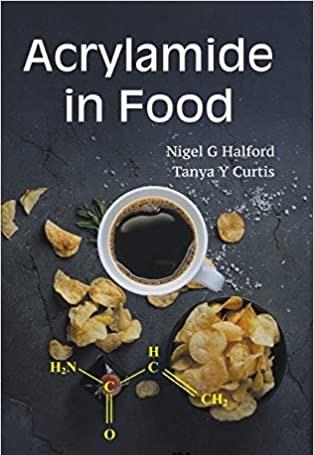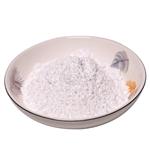Acrylamide in Food
Feb 23,2022
Acrylamide is an odourless, white, crystalline organic solid. It readily undergoes polymerization to form polyacrylamide, which is a highly cross-linked gel polymer with many uses in industry. The polymer of acrylamide is sometimes used as a coagulant aid in the treatment of drinking water and wastewater.

Uses & Benefits
Acrylamide is primarily used industrially to make polyacrylamide, which is mainly used in treating effluent from water treatment plants and industrial processes.
In addition, acrylamide and polyacrylamides are used in the production of dyes and organic chemicals, contact lenses, cosmetics and toiletries, permanent-press fabrics, paper and textile production, pulp and paper production, ore processing, sugar refining, and as a chemical grouting agent and soil stabilizer for the construction of tunnels, sewers, wells and reservoirs
Which foods contain acrylamide?
Carbohydrate-rich foods such as bread, roasted coffee beans, cooked potato products such as chips, crisps and roasted potatoes and some cereal and wheat products have the highest content of acrylamide. Processed foods such as biscuits and crackers also contain some. Boiling, steaming or microwaving are better cooking methods than grilling, roasting, toasting, frying or baking.
The Food Standards Agency are currently recommending the following steps to lower exposure:
Be aware – don’t overcook starchy foods
Consider duration and temperature of cooking
‘Go for Gold’ – lightly toast or until the food is yellow rather than burn or cook to high temperatures for long periods of time
Vary the diet to include a range of alternative starchy carbohydrate foods such as rice and pasta and a wide range of fruit and vegetables
Read cooking instructions carefully and follow cooking times accordingly
Avoid storing raw potatoes in the fridge. Refrigeration increases the level of free sugars in the potato and this in turns increases the amount of the precursor to acrylamide. Instead store them in the dark and if they are in the fridge, take them out and let them come to room temperature before cooking.
- Related articles
- Related Qustion
- Acrylamide in Food Feb 23, 2022
Acrylamide is primarily used industrially to make polyacrylamide, which is mainly used in treating effluent from water treatment plants and industrial processes.
- Acrylamide and Cancer Risk Oct 31, 2019
Acrylamide is a substance that forms through a natural chemical reaction between sugars and asparagine, an amino acid, in plant-based foods – including potato and cereal-grain-based foods.
- Acrylamide-Health Hazard and Toxicity Sep 4, 2019
Acrylamide (or acrylic amide) is an organic compound with the chemical formula CH2=CHC(O)NH2. It is a white odorless solid, soluble in water and several organic solvents. It is produced industrially as a precursor to polyacrylamides, which
Supplementation with pyridoxal 5'-phosphate monohydrate can synthesize neurotransmitters such as dopamine and serotonin, maintaining a healthy nervous system.....
Nov 4,2025Biochemical EngineeringEsomeprazole sodium is used to treat symptoms of gastroesophageal reflux disease (GERD) and other conditions.....
Feb 27,2025APIAcrylamide
79-06-1You may like
- Acrylamide
-

- $10.00 / 25Kg/Bag
- 2025-06-20
- CAS:79-06-1
- Min. Order: 25KG
- Purity: 98%;25%~50%
- Supply Ability: 1000tons/month
- Acrylamide
-

- $0.00 / 1kg
- 2025-06-20
- CAS:79-06-1
- Min. Order: 1kg
- Purity: 0.99
- Supply Ability: 100tons
- Acrylamide
-

- $10.70 / 1KG
- 2025-05-26
- CAS:79-06-1
- Min. Order: 10KG
- Purity: 99%
- Supply Ability: 10000kg






